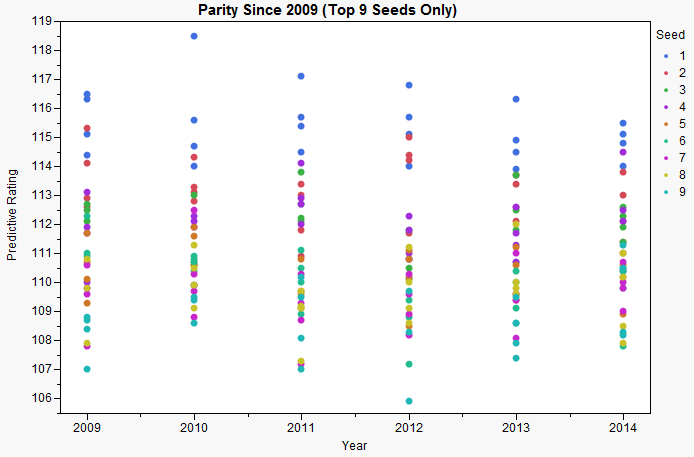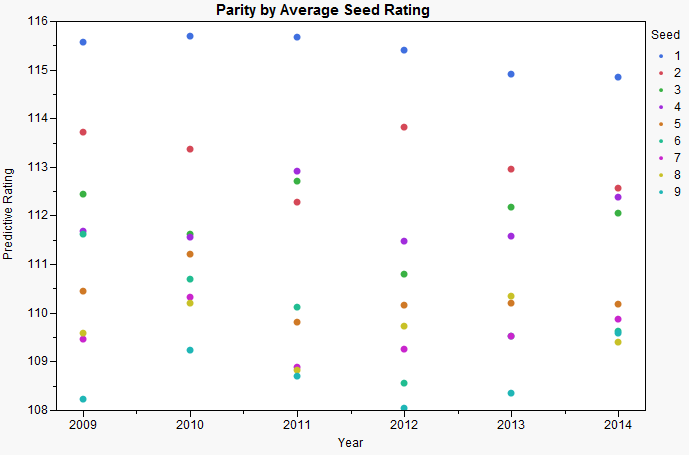NCAA Bracket 2014: Parity Provides An Accurate Description
March 18, 2014 - by Jordan Sperber
Almost every single March, you can find a college basketball TV analyst talking about the parity in the sport for that given year. Last year was a particularly telling example. Nearly every expert was taking Louisville, but the field was still supposedly “wide open.”
So it shouldn’t come as a surprise that these same analysts are still harping on parity again this season. Instead, the surprise is that they are actually right. Parity rules the 2014 NCAA bracket.
How “wide open” is the NCAA tournament this season relative to recent history?
In order to evaluate parity, we are using our pre-tournament Predictive Power Ratings going back to 2009. The following graph shows the all 9-seeds or better for this year and the previous five years:
If you define parity as the difference in rating between the best and worst team, this year’s parity was very nearly matched in 2010, but with one exception. Our Predictive Ratings were very high on Kansas in 2010 before being Farokhmanesh’d. 2009 is similar to this season in that there was not one dominant 1-seed, but the overall spread was still bigger than this year.
Are the 1-seeds significantly weaker this season than in recent history?
The above question is probably the most obvious answer to the cause of parity, but not really the case. While average Predictive Rating of all four 1-seeds is the lowest in our sample, it’s essentially equal to last season:
The real cause of parity is actually the strength of non 1-seeds. Note how last year’s bracket featured a fairly significant drop off at each seed level. This year, however, there are essentially two groups of contenders after the 1-seeds: a group of 2-4 seeds and a group 5-9 seeds.
Printed from TeamRankings.com - © 2005-2024 Team Rankings, LLC. All Rights Reserved.

